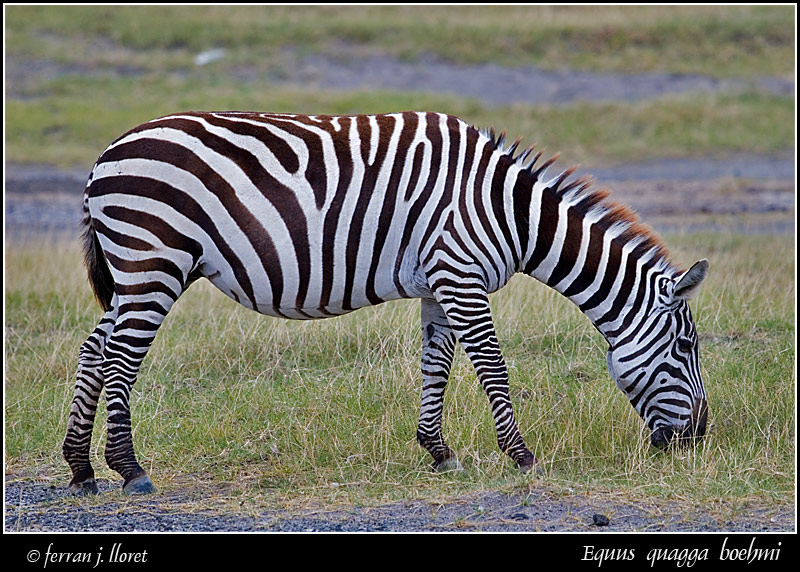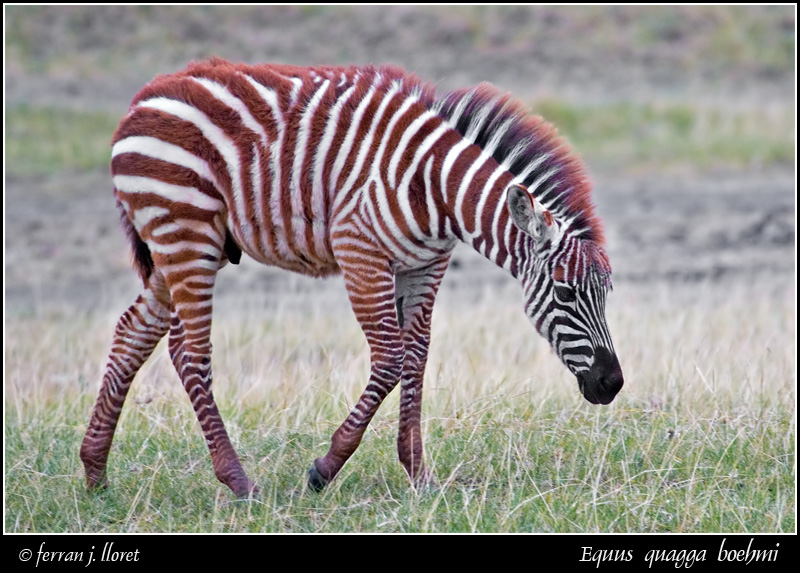The Zebras are members of the family of the horses and the donkeys.
There are three species and some subspecies. The Plains Zebra or common
Zebra (Equus quagga or Equus burchelli) it is the one that has more
subspecies, some extint and your distribution range is more largest,
the Mountain Zebra (Equus zebra) of more restricted distribution range
and the one that i show in the picture is Equus quagga boehmi
The distribution of this subspecies is in Zambia west of the Luangwa river and west to Kariba, Shaba Province of the Democratic Republic of the Congo, north to the Kibanzao Plateau. In Tanzania north from Nyangaui and Kibwezi into southwestern Kenya as fas as Sotik. It can also be found in eastern Kenya and east of the Rift Valley into southernmost Ethiopia. Perhaps it also occurs as far as the Juba River in Somalia.
The Plains Zebra (Equus quagga, formerly Equus burchelli), also known as the Common Zebra or the Burchell's Zebra, is the most common and geographically widespread form of zebra, once being found on plains and grasslands from the south of Ethiopia right through east Africa as far south as Angola and eastern South Africa. The Plains Zebra is much less numerous than it once was, because of human activities such as hunting it for its meat and hide, as well as encroachment on much of its former habitat, but it remains common in game reserves.
In 2004, C.P. Groves and C.H, Bell did investigations on the taxonomy of the zebra's genus Equus, subgenus Hippotigris. They published their research in Mammalian Biology. They revised the subspecies of the Plains Zebra Equus quagga. Six subspecies are recognizable.
• Quagga, Equus quagga quagga Boddaert, 1785 †
• Burchell's Zebra, Equus quagga burchellii Gray, 1824
• Grant's Zebra, Equus quagga boehmi Matschie, 1892
• Selous' zebra, Equus quagga borensis Lönnberg, 1921
• Chapman's Zebra, Equus quagga chapmani Layard, 1865
• Crawshay's Zebra, Equus quagga crawshayi De Winton, 1896
Information source
IUCN information
Equus grevyi information
Photographed in dry grassland of the Nakuru Lake National Reserve, Juliol de 2006.
|

